
Friday, March 30, 2018
Microengineered slippery rough surface for water harvesting in air
A slippery rough surface inspired by both pitcher plants and rice leaves outperforms state-of-the-art liquid-repellent surfaces in water harvesting applications.
A novel test bed for non-equilibrium many-body physics
A study of electronic transport in a one-dimensional quantum wire containing a mesoscopic lattice provides fresh insight into the behavior of electrons in materials.

Making rusty polymers for energy storage
Researchers have developed a straightforward way to make a type of conducting polymer with high surface area that is likely to be useful for energy transfer and storage applications.

Chaos that will keep you warm: Researchers improve heat insulation using deliberate chaos
Powder is extremely well-suited for thermal insulation when there is a jumble of different sized nanoparticles in it.

Scientists build army of metal-organic nanoflowers to treat cancer
Tiny frameworks to enter clinical testing for cancer treatment.

Scientists demo rocking brownian motors for nanoparticles (w/video)
The motors propel nanoscale particles along predefined racetracks to enable researchers to separate nanoparticle populations with unprecedented precision.

What a mesh
A team of scientists from across the U.S. has found a new way to create molecular interconnections that can give a certain class of materials exciting new properties, including improving their ability to catalyze chemical reactions or harvest energy from light.

Wednesday, March 28, 2018
A paperlike LCD - thin, flexible, tough and cheap
Optoelectronic engineers have manufactured a special type of liquid crystal display (LCD) that is paper-thin, flexible, light and tough. With this, a daily newspaper could be uploaded onto a flexible paperlike display that could be updated as fast as the news cycles.

Nanoplatelets could make TVs more energy efficient
Researchers have discovered new optical properties in sheet-like materials that could eventually make flat-screen televisions, laptops and other light-emitting appliances more energy-efficient.
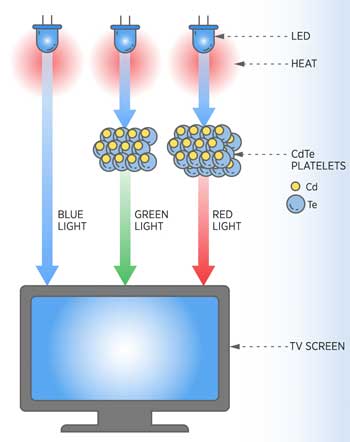
Knitting electronics with yarn batteries
When someone thinks about knitting, they usually don't conjure up an image of sweaters and scarves made of yarn that can power watches and lights. But that's just what one group is reporting.

Tuesday, March 27, 2018
New glass-like polymer could conduct electricity for transparent electronics
Researchers have created a transparent polymer film that also conducts electricity, introducing an inexpensive organic material for applications such as the screens of electronic devices.

The future of photonics using quantum dots
Quantum-dot lasers are promising for integrated photonic circuits.

New nanotweezers open door to innovations in medicine, mobile tech
Scientists have developed opto-thermoelectric nanotweezers (OTENT) that will help lead to a greater understanding of matter and biological systems and open a range of possibilities for fundamental and technical innovation in nanophotonics.

Exploring the thermoelectric properties of tin selenide nanostructures
Researchers discover that nanometer-thick tin selenide crafted in thin films of connected ?nanoflakes? shows promise for thermoelectric energy conversion.

Molecular prison forces diatomic inmates to cell floor
Organic prison too crowded for molecular inmates to move about freely.

Cell-penetrating 'nanodrills' show promise for intracellular drug delivery
Researchers have created new nanomaterials able to cross cell membranes, establishing a novel platform for the intracellular delivery of molecular drugs and other cargo.

Understanding nanocatalysts' 'talk' could better inform design
Scientists published a paper, the culmination of years of study, that lays out a conceptual framework for understanding how a nanocatalyst particle works. The work could help inform better design of synthetic nanocatalysts down the road.

Thin-film could help manage heat flow in future devices
Researchers have demonstrated the ability of a thin film to conduct heat on just its surfaces, identifying a potential solution to overheating in electronic devices such as phones and computers.

Tiny, tooth-mounted sensors that can track what you eat
Wireless real-time monitoring could add precision to the linkage between diet and health.

Metal-oxide/graphene nanosheet composite exhibits unprecedented energy storage properties
Single-layer metal oxide nanosheets sandwiched between graphene layers exhibit record energy storage figures of merit.
Modulating Superconductivity of 2D Atomic Layers of Indium with Charge Transfer from Self-assembled Organic Molecules
Charge and spin transfer from copper-phthalocyanine organic molecules self-assembled on superconducting atomic layers of indium modifies the superconducting transition temperature of the indium.

Monday, March 26, 2018
Understanding charge transfers in molecular electronics
An international research team has found a way to understand and manipulate the transition of charges in molecular junctions.

Atomically thin light-emitting device opens the possibility for 'invisible' displays
Engineers have built a bright-light emitting device that is millimeters wide and fully transparent when turned off. The light emitting material in this device is a monolayer semiconductor, which is just three atoms thick.

Harvesting energy from light fluctuations
Hybrid plasmonic and pyroelectric harvesting of light fluctuations.

Self-assembling, tunable interfaces found in quantum materials
Highly adaptive electronics could be created using quantum features.

Atomistic insights into electrocatalysis
Scientists found out that the topmost atomic layers of electrocatalysts contain chemical species, which determine their efficiency and reveal how they can be influenced to speed-up water splitting.

Edges and corners increase efficiency of catalytic converters
X-rays reveal oxide islands on noble metal nanoparticles.

Artificial bio-inspired membranes for water filtration
Inspired by cellular proteins, researchers have developed membranes with asymmetric artificial channels in the interior, from which they were able to observe 'chiral' water.

Improving human-data interaction to speed nanomaterials innovation
New application of data analysis, visualization techniques achieves better representation of multidimensional materials data.

A new way to find better battery materials
Design principles could point to better electrolytes for next-generation lithium batteries.

A simple method developed for 3D bio-fabrication based on bacterial nanocellulose
Researchers have developed a simple and customizable process that uses superhydrophobic interfaces to finely engineer the bacteria access to oxygen in three dimensions and in multiple length scales, resulting in hollow, seamless, nanocellulose-based pre-determined objects.
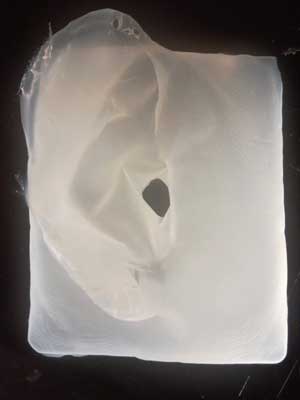
Sunday, March 25, 2018
Terahertz computer chip is now within reach
Researchers have created technology that will enable our computers - and all optic communication devices - to run 100 times faster through terahertz microchips.

Friday, March 23, 2018
Researchers unveil high-sensitivity 3-D technique using single-atom measurements
Scientists have unveiled a stunningly accurate technique for scientific measurements which uses a single atom as the sensor, with sensitivity down to 100 zeptoNewtons.
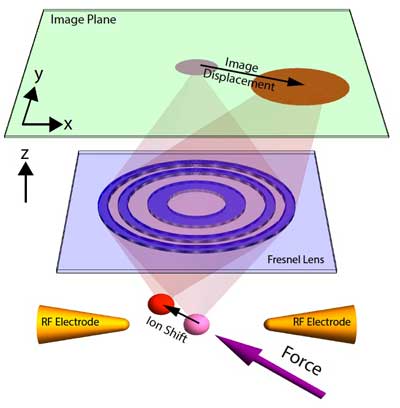
Breakthrough antimalarial drug delivery system using mesoporous silica nanoparticles
An international collaborative research group has successfully developed the world's first drug delivery system for antimalarial drugs. The treatment has increased efficiency up to 240 times as much as when antimalarial medicine is taken orally.

Reducing noise in silicon quantum dots boosts calculation precision
The quantum equivalents of computer bits can be manipulated quicker and more precisely by using techniques that liberate them from intrinsic ?hyperfine noise?.

Thursday, March 22, 2018
Small poke - huge unexpected response
Exotic material exhibits an optical response in enormous disproportion to the stimulus - larger than in any known crystal.

Sniffing out the foundational science of sensors
Studying how to make and combine cutting-edge materials is leading to cheaper, more efficient, and more sensitive gaseous sensors.

Making shiny pellets of graphite from functionalized graphene (w/video)
Researchers use mechano-chemical process to make strong, lightweight material.
Electric textile lights a lamp when stretched
Researchers have developed a fabric that converts kinetic energy into electric power. The greater the load applied to the textile and the wetter it becomes the more electricity it generates.

Electric textile lights a lamp when stretched
Researchers have developed a fabric that converts kinetic energy into electric power. The greater the load applied to the textile and the wetter it becomes the more electricity it generates.

Golden touch: Next-gen optical disk to solve data storage challenge (w/video)
New technology offer cost-efficient and sustainable solution to global data storage challenge, while enabling the pivot from Big Data to Long Data and opening new realms of scientific discovery.

In field tests, device harvests water from desert air
The new device could provide drinking water even in extremely arid locations.
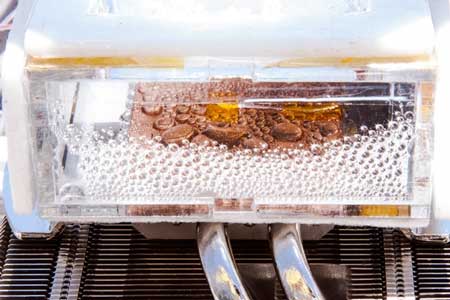
Can objects feel one another before touching?
Scientists have found out the mechanisms whereby two objects feel each other before 'touching' and the characteristics of the contact between their first atoms.

Scientists control molecular alignment on a graphene surface
Researchers have developed a simple way to align molecules in one direction on a flat graphene surface. Efficiently controlling molecular alignment is expected to lead to significant progress in surface chemistry and molecular engineering, as well as materials science.
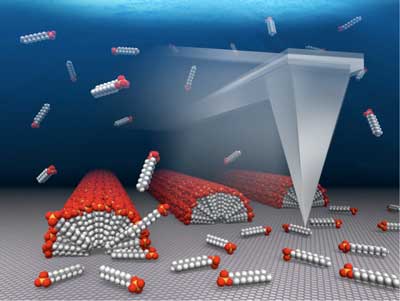
Wednesday, March 21, 2018
Researchers discover new accuracies in cancer-fighting, nanomedicine drug delivery
A promising discovery for advanced cancer therapy reveals that the efficiency of drug delivery in DNA nanostructures depends on their shapes.

Design approach developed for important new catalysts for energy conversion and storage
New method could aid in design of pharmaceuticals and optical and data storage materials.

Designing a new material for improved ultrasound
Development of a theoretical basis for ultrahigh piezoelectricity in ferroelectric materials led to a new material with twice the piezo response of any existing commercial ferroelectric ceramics.
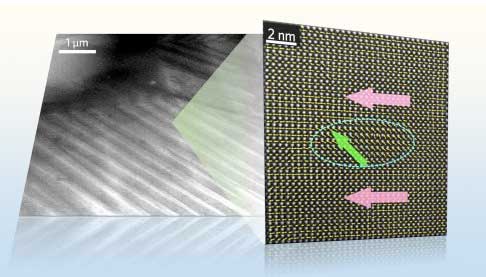
Researchers explore enzymetic activities based on nanocomplex sensors
A team of researchers compared the susceptibility of different triangle silver nanoprisms (TSNPRs) towards H2O2 and elucidated the influence of capping agents and structural size on the etching process, with the aim of optimizing TSNPRs for H2O2 etching-based biosensors, such as glucose and glucose oxidase.

Nanomaterials hold promise for producing hydrogen from water
Scientists use hollow gold-silver nanoshells to boost the efficiency of photocatalysts, where the combined nanocomposite materials generate hydrogen from water, powered only by sunlight.

Nanocrystalline graphite enables new class of harsh environment electronics
Researchers have demonstrated reliable operation of microelectromechanical relays by coating the contacts with nanocrystalline layers of graphite, to enable ultra-low-power electronics for harsh environments.
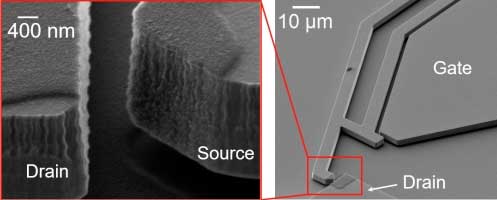
Cellulose nanofibers won from elephant and cow manure for sustainably making paper
It's likely not the first thing you think of when you see elephant dung, but this material turns out to be an excellent source of cellulose for paper manufacturing in countries where trees are scarce, scientists report.

Subscribe to:
Posts (Atom)

